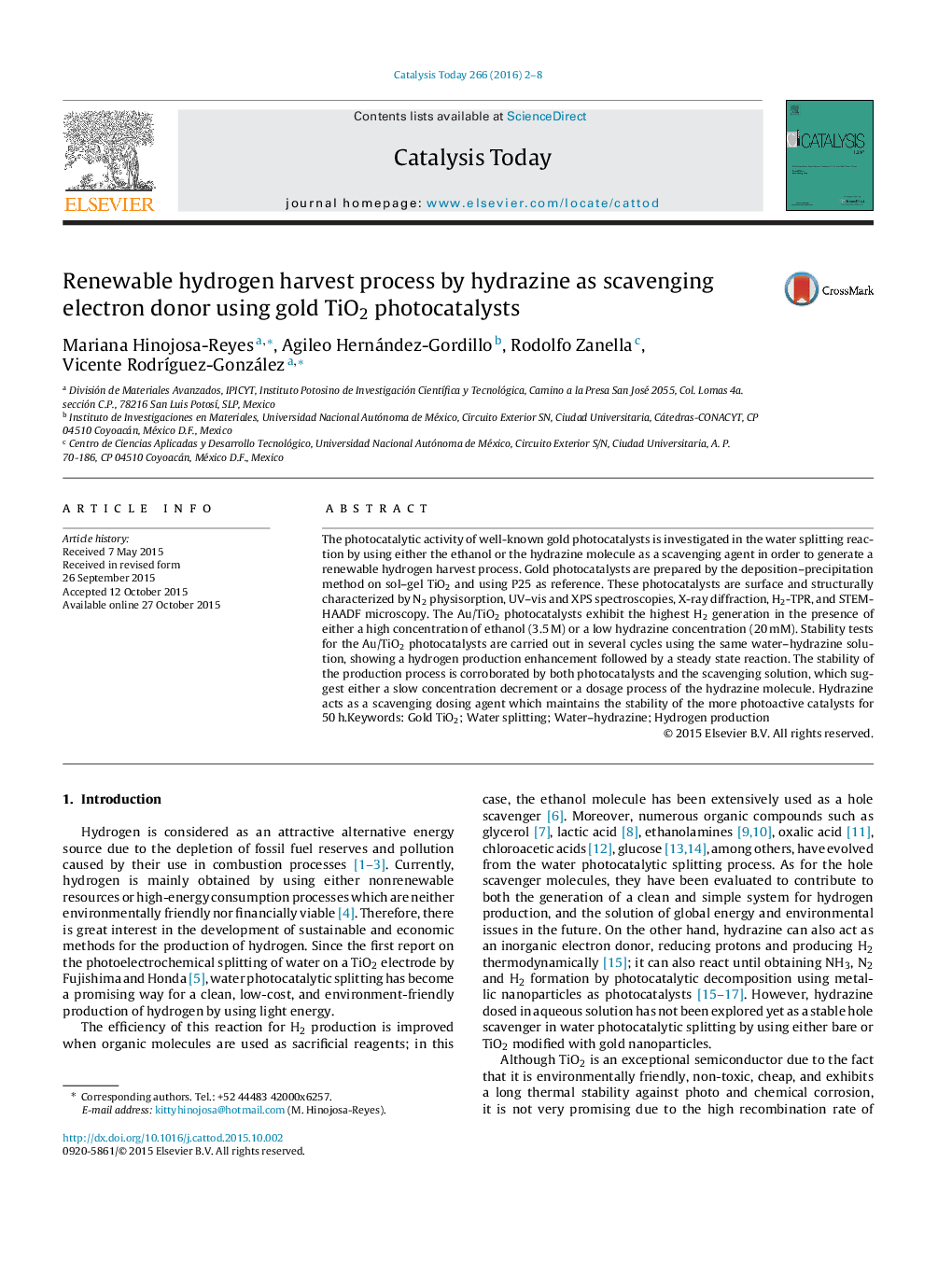| Article ID | Journal | Published Year | Pages | File Type |
|---|---|---|---|---|
| 53673 | Catalysis Today | 2016 | 7 Pages |
•The highest H2 production is obtained with AuNPs/TiO2.•Gold catalysts produce hydrogen from water during 4 cycles (50 h).•Hydrazine as a hole scavenger drives the hydrogen production from water.•AuNPs work as electron traps avoiding charge recombination h+/e−.•Pure hydrogen CO-free is obtained from water.
The photocatalytic activity of well-known gold photocatalysts is investigated in the water splitting reaction by using either the ethanol or the hydrazine molecule as a scavenging agent in order to generate a renewable hydrogen harvest process. Gold photocatalysts are prepared by the deposition–precipitation method on sol–gel TiO2 and using P25 as reference. These photocatalysts are surface and structurally characterized by N2 physisorption, UV–vis and XPS spectroscopies, X-ray diffraction, H2-TPR, and STEM-HAADF microscopy. The Au/TiO2 photocatalysts exhibit the highest H2 generation in the presence of either a high concentration of ethanol (3.5 M) or a low hydrazine concentration (20 mM). Stability tests for the Au/TiO2 photocatalysts are carried out in several cycles using the same water–hydrazine solution, showing a hydrogen production enhancement followed by a steady state reaction. The stability of the production process is corroborated by both photocatalysts and the scavenging solution, which suggest either a slow concentration decrement or a dosage process of the hydrazine molecule. Hydrazine acts as a scavenging dosing agent which maintains the stability of the more photoactive catalysts for 50 h.Keywords: Gold TiO2; Water splitting; Water–hydrazine; Hydrogen production
Graphical abstractDosage process of scavenger agent “hydrazine” in the photocatalytic hydrogen production.Figure optionsDownload full-size imageDownload high-quality image (117 K)Download as PowerPoint slide
